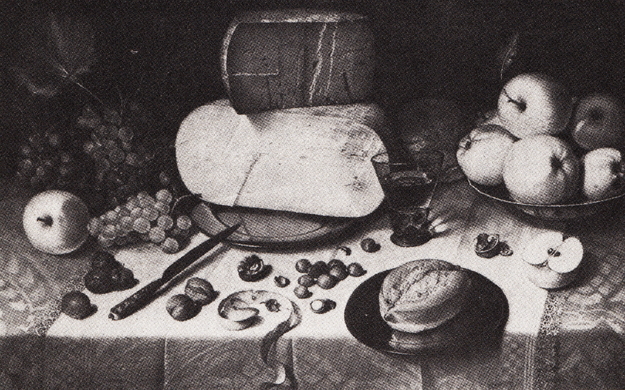Video festivals (see pp 108, 130, 136) offer no alternative. Their condensed richness of information is of course indispensable, but one cannot concentrate on a single work, let alone view that work more than once to establish a relationship, to go beyond the dispersive kind of art tourism that nowadays is common, in the form of the mammoth exhibitions organized for other art forms.
Then there is in each civilized country a number of places where artists present their productions to a select audience, little temples where a shepherd, with appropriate respect, presses the play button for you. Your editorial board is to be found there also from time to time, rustling a roll of peppermints in the back row.*
Like in the late middle ages, when the spreading culture of private devotion brought icons and portable altar pieces to every believer who could afford them. Like Dutch art history which happened for centuries in the houses of the well-to-do. So not video art.
At the same time one in every three households has a videorecorder (NL 30%, GB 36%, USA 23%). So it enters even the house of the art watcher.
Video art though, is on a market where there is no place for individual consumers. Rental is aimed towards one-time public screenings, sales towards museums and other collecting institutions. Production costs are very high (excl. honorarium 5-20 thousand guilders), rentals and sales are infrequent, so the prices one can guess: respectively ƒ 100-200 and ƒ 1,ooo-2,ooo.
Private persons aren't going to quickly shell out that kind of money for a tape that you can't hang over the sofa, that is quickly subject to wear and in any case has a limited, say 10 year, lifespan. (In our next issue the economist/art historian Pablo Collette shall explore in depth the peculiarities of the art video market.)
The biggest problem we seem to face as a magazine is that we write about a sort of art that one comes across every now and then, but is difficult to come on intimate terms with. One inventories, discusses, informs, legitimatizes, problematises. All on paper.
By preference we should leave out the troublesome illustrations, and in every issue of this magazine include a videotape. Because of financial reasons this is impossible. Instead we are offering, on home format, to the readers of our magazine, some of the most important tapes discussed. At the price normally paid for a single public screening of the same work.
The tapes offered (in this issue from NAN HOOVER and FRANK & KOEN THEYS) are of very high quality and impossible to understand seen only once. To our experience they only come to full blossom after repeated scrutiny in the concentrated intimacy of the home.
We are very grateful to the co-operating artists for hazarding their livelihood; will a museum still be prepared to buy this work? Although the tapes purchased through us are strictly meant for private use, and although also the purchaser of such a tape will have to pay for any public screening, in fact the work of art is as original as a genuine copy. The effect of this selling strategy on the often modest income of the video artist is unclear.
By this action MEDIAMATIC does not intend to deploy any distribution activities, the experiment is only meant to investigate how we might solve our own illustration problem, and to survey whether there exists a private market potential for video art. Therefore the tapes will be available through us only for a limited time, and the distributer's representation of the artist is fully maintained. We hope that the regular distributes (in this issue MONTEVIDEO and DE BEURSSCHOUWBURG), whom we thank for their cooperation, will in the long run steal the initiative.
*This intranslatable expression refers to a consumption pattern common to Dutch Calvinist churchgoers.
